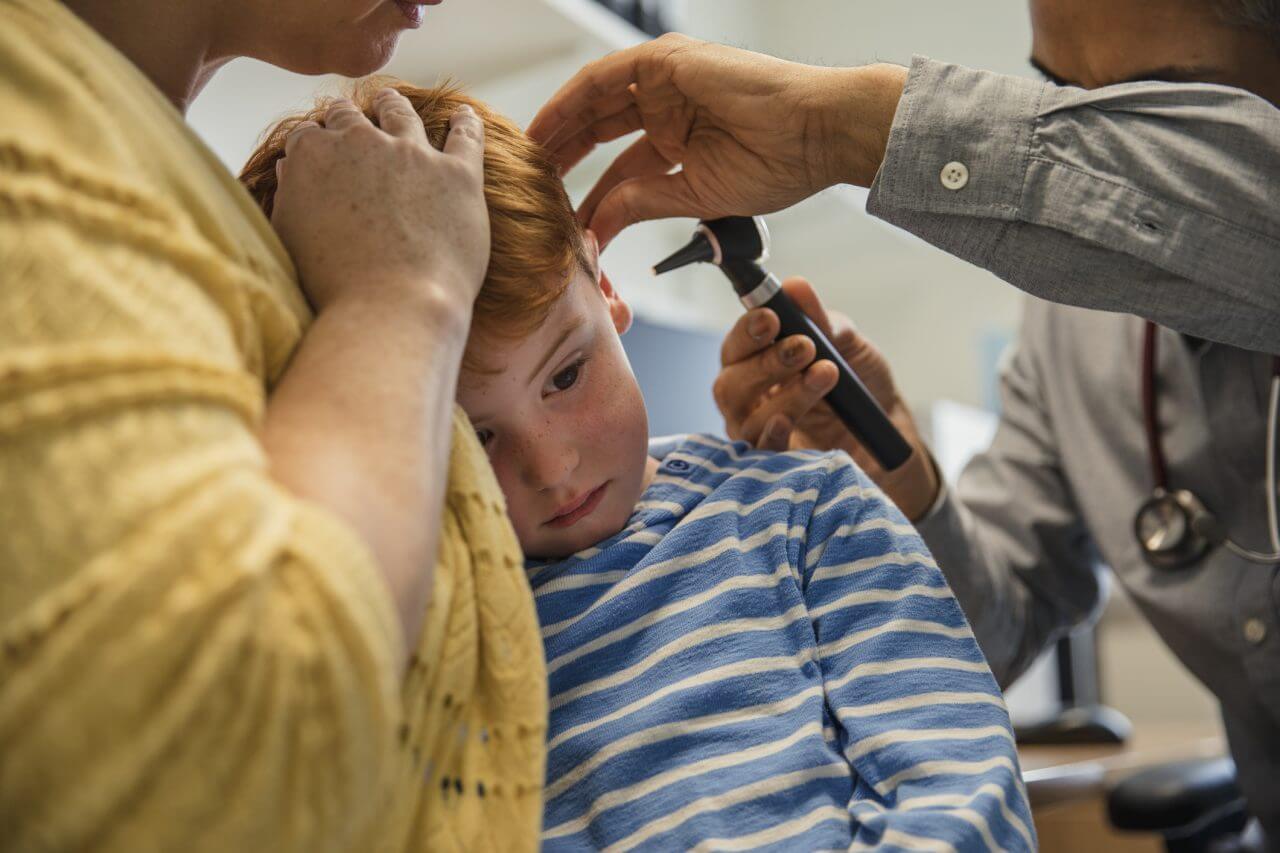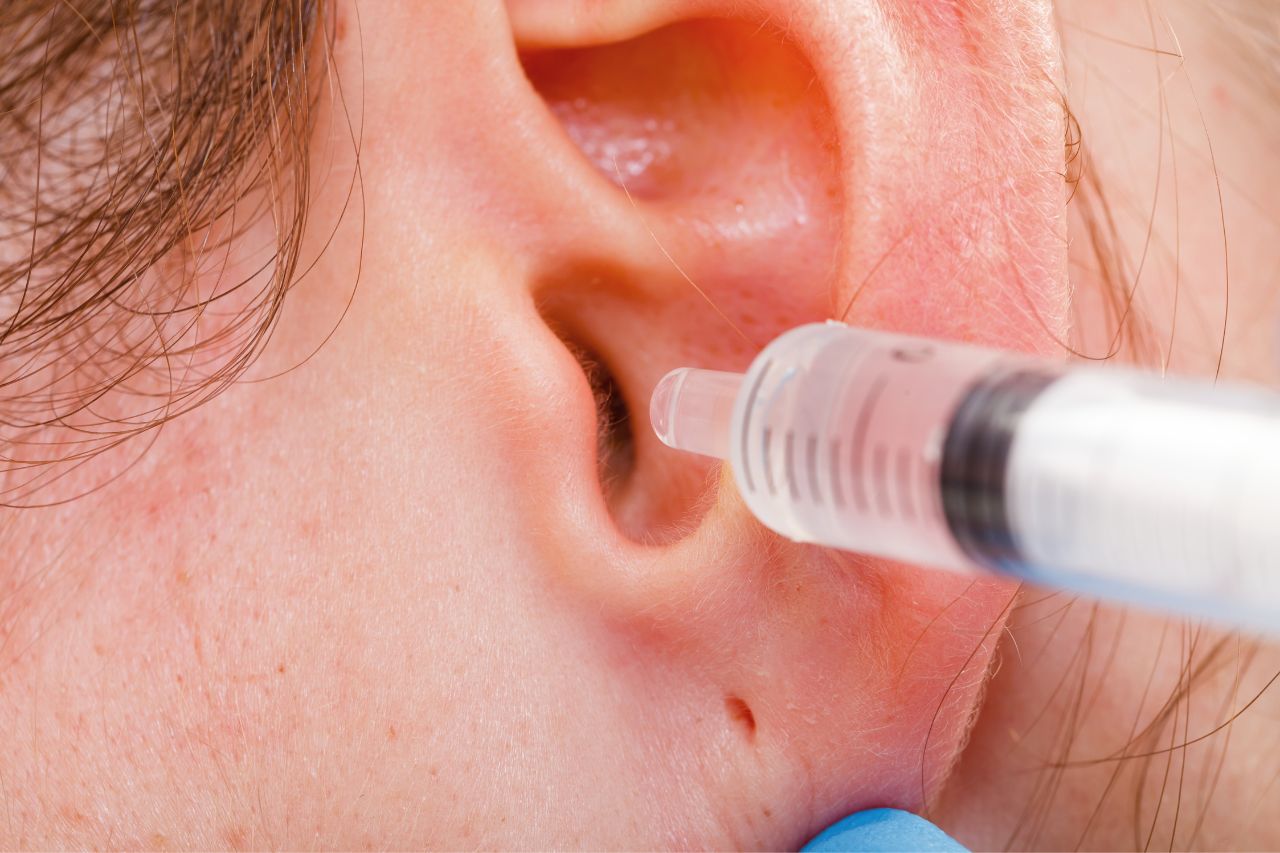What is Swimmer’s Ear?

Swimmer’s ear is an infection of the outer ear canal, which runs from the ear to the eardrum. Technically known as otitis externa, it is referred to as swimmer’s ear because it is often caused by water that remains in the ear canal after swimming, especially water with a high bacteria count.
Another cause of this condition is a scratch or abrasion in the ear canal where bacteria can grow. These can be caused by putting fingers, cotton swabs, headphones, hearing aids or other items into the ear canal. Irritants such as hair products can also increase the risk of swimmer’s ear.
Left untreated, swimmer’s ear can progress and cause serious complications such as hearing loss and more widespread or chronic infection.
Note that swimmer’s ear is not the same as what is commonly referred to as an “ear infection” or acute otitis media, which is an infection behind the eardrum in the middle ear. While it shares some of its symptoms with swimmer’s ear, an ear infection has different causes and treatments.
Swimmer’s Ear Symptoms
The symptoms of swimmer’s ear change as the condition evolves. Initially, you may notice slight itching and redness in the ear canal. You may also experience discomfort if you pull on your ear, and you may observe clear, odorless fluid draining from the ear.
As swimmer’s ear progresses, the itching and discomfort become more intense and the redness in the ear becomes more widespread. Fluid drainage also increases and you may notice pus coming from the ear. Your hearing may be affected at this stage, with sound being muffled.
In the later stages of swimmer’s ear, there is extreme pain that may radiate to your face, the side of your head or your neck. The ear canal is completely blocked and redness is visible in the outer ear. You may also develop a fever and experience swelling in your lymph nodes.
Swimmer’s Ear Treatment and Prevention
If you develop swimmer’s ear, your doctor will treat it by gently cleaning the ear canal and prescribing ear drops that inhibit bacterial or fungal growth and reduce inflammation. However, there are actions you can take to minimize the risk of swimmer’s ear, including:
- Avoid swimming in water where there are indications (from signage, news reports, etc.) that the bacteria count is high.
- After swimming, gently dry the outer ear and tip your head to one side. Repeat steps for the other ear to allow water to drain from the ear canals.
- Avoid putting foreign objects or your fingers in your ear canals.
- If you are prone to swimmer’s ear, use over-the-counter preventative ear drops after swimming.
- If you think you may have a perforated eardrum, consult your healthcare professional or an Otolaryngologist before using any ear drops to prevent or treat swimmers ear.
Swimmer’s ear is uncomfortable and potentially serious, but it can be prevented or successfully treated when addressed promptly.



